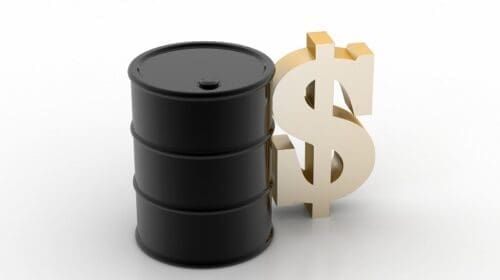Energy prices have declined significantly since last summer, and it appears that trend will continue in the coming months.
Gasoline and diesel retail prices are down 33% since June, and the price of the natural gas spot price is off 70%.
One key to the price decline of gasoline and diesel is crude oil inventories, which are up 14% since December. The Energy Information Administration (EIA) reported an increase of 1.6 million barrels this week, bringing total inventories (excluding Strategic Petroleum Reserve) to 480 million barrels. Inventories in December were at 420 million barrels.
EIA recently forecast crude oil will average $77 per barrel in 2023, which is $11 less than its previous prediction of $86. Gasoline also was revised down from $3.51 to $3.32, and diesel at $4.20 down 16%. Natural gas is expected to average $4.90 per million British thermal units, which is a 9.8% drop from its previous estimate of $5.43.
West Texas Intermediate crude oil closed at $77 on the New York Mercantile Exchange on Wednesday. EIA said the national average for retail gasoline was $3.34 per gallon Wednesday.
EIA based its new projections this week on expectations of a slowing economy (0.5% growth in GDP), and an increase in global petroleum supplies.
“Relatively flat economic growth in 2023 results in total U.S. energy consumption falling by 0.9% in our forecast,” EIA stated. EIA said it assumed global GDP growth—based on forecasts from Oxford Economics—will average 1.8% in 2023. “We forecast that global liquid fuels consumption will increase 1% in 2023 (1.0 million b/d),” EIA said. ”Petroleum consumption growth is driven by rising petroleum demand in China and India in both years (2023 and 2024).”
EIA forecast global petroleum production will increase by 1% (1.1 million b/d) from 2022 to 2023. “The United States and OPEC account for most of the increase in global production, offsetting production declines in Russia,” EIA said. “We forecast that Russia’s petroleum production will fall from 10.9 million b/d in 2022 to 9.5 million b/d in 2023 as a result of sanctions related to Russia’s full-scale invasion of Ukraine. We forecast that U.S. production will grow by 5% (1.0 million b/d) in 2023, and OPEC liquid fuels production (which includes crude oil) will increase by 0.5% (160,000 b/d) in 2023.”
The amount of oil produced and sold internationally by Russia remains uncertain. On Feb. 5, the European Union’s ban on seaborne imports of petroleum products from Russia become effective, which is expected to be more disruptive to global petroleum markets than the EU’s December 2022 ban on seaborne crude oil imports from Russia.
EIA said oil production in the U.S. will reach historic highs in 2023 averaging 12.4 million barrels per day (b/d), which would surpass the previous high of 12.3 million b/d in 2019.
“Implied builds in global petroleum inventories (when there is more petroleum production than consumption) are driving these declines in crude oil prices,” EIA said.
Alex Mills is the former President of the Texas Alliance of Energy Producers.
Alex Mills is the former President of the Texas Alliance of Energy Producers. The Alliance is the largest state oil and gas associations in the nation with more than 3,000 members in 305 cities and 28 states.
Oil and gas operations are commonly found in remote locations far from company headquarters. Now, it's possible to monitor pump operations, collate and analyze seismic data, and track employees around the world from almost anywhere. Whether employees are in the office or in the field, the internet and related applications enable a greater multidirectional flow of information – and control – than ever before.




















